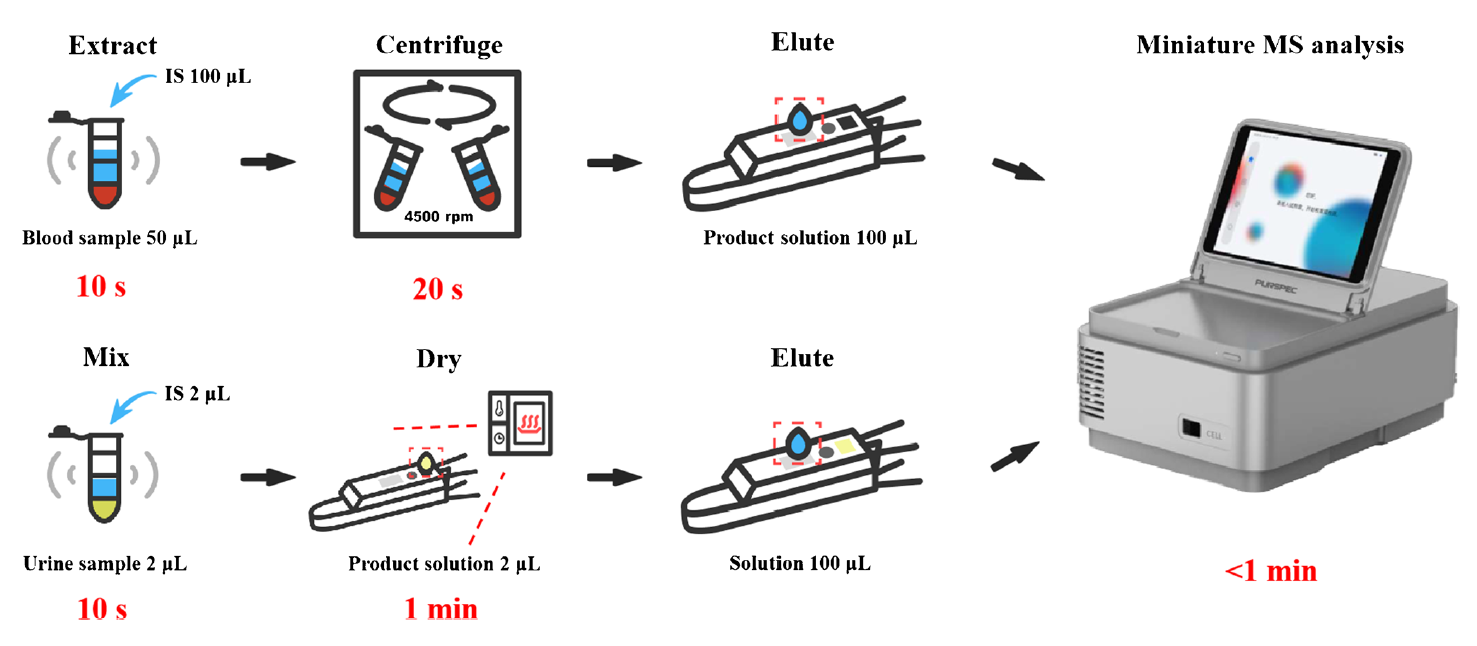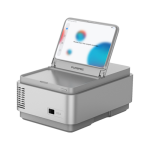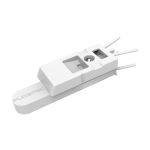Miniature mass spectrometer-based point‑of‑care assay for quantification of metformin and sitagliptin in human blood and urine
Metformin (MET) and sitagliptin (STG) are widely used as the first-line and long-term oral hypoglycemic agents for managing type 2 diabetes mellitus (T2DM). However, the current lack of convenient and rapid measurement methods poses a challenge for individualized management. This study developed a point-of-care (POC) assay method utilizing a miniature mass spectrometer, enabling rapid and accurate quantification of MET and STG concentrations in human blood and urine. By combining the miniature mass spectrometer with paper spray ionization, this method simplifies the process into three to four steps, requires minimal amounts of bodily fluids (50 μL of blood and 2 μL of urine), and is able to obtain quantification results within approximately 2 min. Stable isotope-labeled internal standards were employed to enhance the accuracy and stability of measurement. The MS/MS responses exhibited good linear relationship with concentration, with relative standard deviations (RSDs) below 25%. It has the potential to provide immediate treatment feedback and decision support for patients and healthcare professionals in clinical practice.

In this study, a method for rapid analysis of MET and STG in human blood and urine using a miniature mass spectrometer combined with ambient ionization method was established. This method requires only a small volume of biological fluids (blood, 50 μL; urine, 2 μL), and the pretreatment process can be completed within 2 min. MET and STG concentration can be determined using a miniature mass spectrometer Cell by applying high voltage and solvent to paper spray ionization after simple steps of mixing, drying, and centrifugation. Strong linear relationships between responses and concentrations were observed within the desired concentration ranges of 20–1000 ng/mL in blood and 5–500 μg/mL in urine, with RSDs less than 25%. Although miniature mass spectrometers currently have lower resolution and sensitivity compared to standard laboratory-scale instruments, this method offers the advantages of faster analysis speed and lower sample pretreatment requirements, which makes it more suitable for on-site analysis in clinical settings, providing immediate results to clinicians and patients. This study comprehensively assessed the reliability of measuring MET and STG using miniature mass spectrometry, providing crucial guidance for practical applications and the development of similar methods. With advancements in sensitivity, resolution, and quantitative accuracy of miniature mass spectrometry, this method is expected to be more widely applied.
Analytical and Bioanalytical Chemistry (2024) 416:3305-3312,



